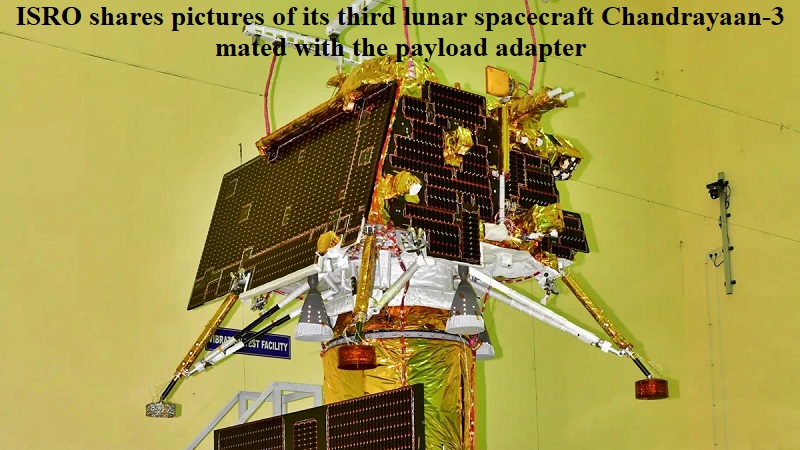
Demonstrating progress towards a mid-July launch, the Indian Space Agency (ISRO) has shared images of its third lunar spacecraft, Chandrayaan-3, which has been connected to the payload adapter. The payload adapter serves as a hardware component that links the satellite (payload) to the upper stage of a rocket. Once the satellite is connected to the payload dispenser, it is encapsulated within the payload fairing (the rocket’s nose cone) and stacked onto the launch vehicle.
Dr. S. Somanath, Chairman of ISRO, informed WION that the names “Vikram” and “Pragyan” would be retained for the Chandrayaan-3 lander and rover, respectively. “Vikram” pays tribute to Dr. Vikram A Sarabhai, the visionary behind India’s space program, while “Pragyan” means “wisdom” in Sanskrit. Dr. Somanath added that the spacecraft, scheduled for launch in mid-July, would attempt a lunar landing by the end of August.
Chandrayaan-3 marks India’s third lunar mission and second lunar landing attempt, following the incomplete lunar soft landing of the previous mission, Chandrayaan-2. During the vertical landing approach, contact with the lunar lander “Vikram” was lost when it was merely two kilometers above the lunar surface.
In contrast to Chandrayaan-2, Chandrayaan-3 will not have a dedicated orbiter with multiple scientific payloads. Instead, it will feature a propulsion module to assist in reaching the lunar orbit. The orbiter from Chandrayaan-2, which continues to orbit the moon, remains operational and collects scientific data from its payloads.
The weight of the Chandrayaan-3 orbiter is lower than its predecessor, as the reduced payload mass from the orbiter has been transferred to the lunar lander. ISRO has improved the lander by ruggedizing it, incorporating larger solar panels for enhanced power generation, increasing the fuel capacity for maneuvering, implementing failure tolerance measures, and enhancing scientific payloads.
Dr. S. Somanath stated, “The added mass on the lunar lander comprises more fuel, more ruggedization, measures for failure tolerance and strengthening of landing legs, and increased scientific payloads, larger solar panels for better power generation.” Responding to a query, he confirmed that Chandrayaan-3 would weigh less than its predecessor, which was approximately 3.6 tonnes (3,600 kilograms).
Earlier, the ISRO Chairman mentioned that the launch window for Chandrayaan-3 aboard the LVM3 rocket would span from July 12th to July 19th. The launch window represents the optimal timeframe for a launch, and a specific day within that period will be chosen based on various factors.
Due to the six-week travel time from Earth to the Moon (a distance of 384,000 kilometers) required by the Indian lunar spacecraft, precise calculations and minute-level launch timing are crucial. Factors such as weather forecasts, a debris-free flight path, the dynamic position of the destination relative to Earth, travel duration, maneuvering requirements, the chosen rocket, the mission’s objectives, and the movement and influence of other celestial bodies are all taken into account by mission planners.
When asked about his confidence in the successful outcome of Chandrayaan-3, Dr. Somanath expressed his overall confidence but acknowledged the unforgiving nature of space. He emphasized the importance of rigorous testing and clear decision-making to achieve favorable results. With a smile, he mentioned that even luck is a product of hard work and perseverance in doing the right things at the right time.

Post Your Comments